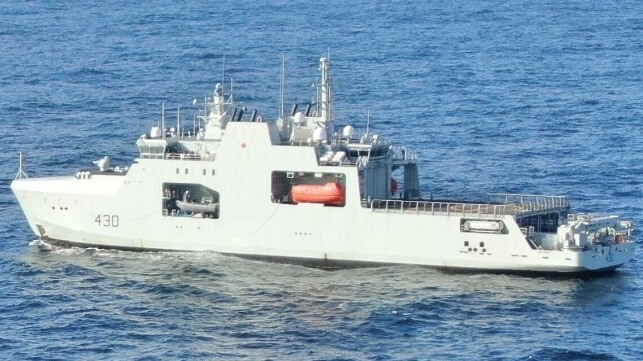More Problems Identified Aboard Canada's Ice-Class Patrol Vessels

Canada's National Shipbuilding Strategy has come in for considerable criticism over the years for spiraling costs, as is common for initiatives of its kind. But it also faces scrutiny over vessel quality, like excess lead in the drinking water systems of the NSS' Arctic and Offshore Patrol Ships (AOPS).
The Ottawa Citizen, which has frequently reported on the program's travails, says that the NSS' AOPS have also developed more serious teething problems. Episodic flooding of interior compartments, inoperable deck cranes, out-of-spec towing equipment, inadequate anchor holding power, and incompatible helicopter landing pads are among the issues that the Canadian government will have to work out with the shipbuilder, according to the paper.
Some of the early hulls are out of warranty, so the Canadian Navy will be supporting some portion of the cost of repairs. Three others are in construction or within the one-year warranty period.
In a statement, Irving Shipbuilding described the process of working through issues like these as "a normal but essential element of shipbuilding."
All the identified issues are being fixed or are being analyzed for solutions, the service told Ottawa Citizen. In the meantime, a critical personnel shortage in the Royal Canadian Navy means that only one Arctic and Offshore Patrol Ship can be deployed at a time, leaving more hulls open for maintenance availabilities.
The Canadian Coast Guard is slated to get two AOPS vessels for its own use, and the first is under construction.
